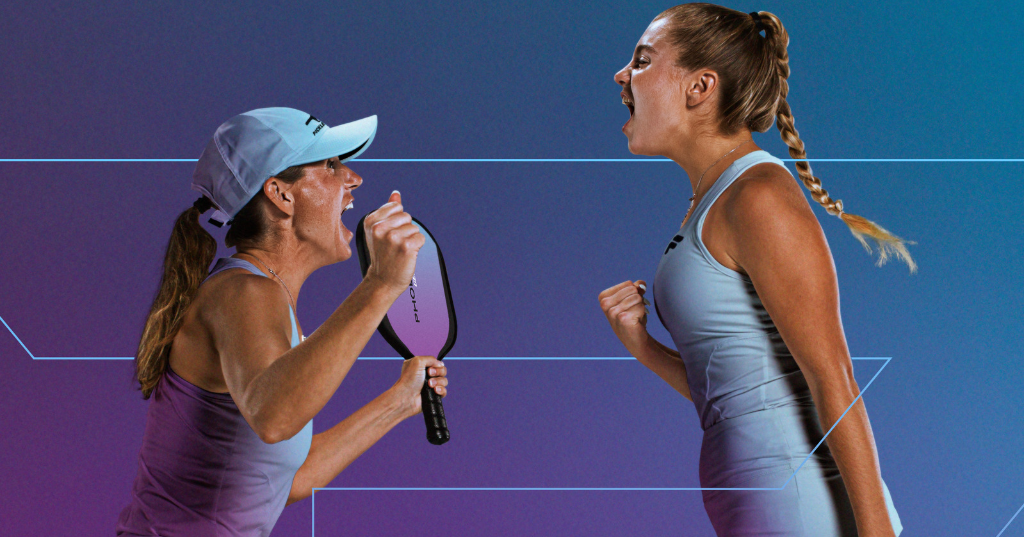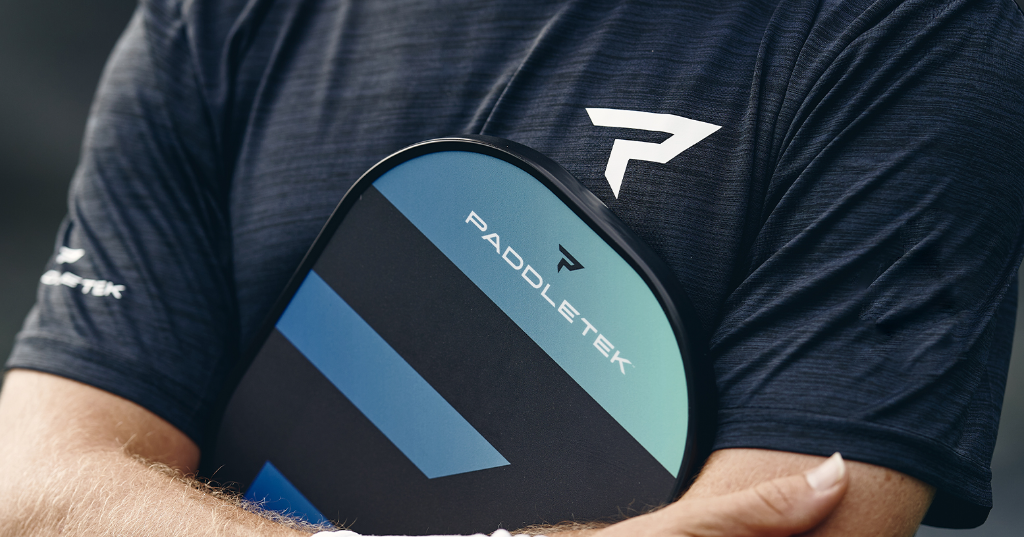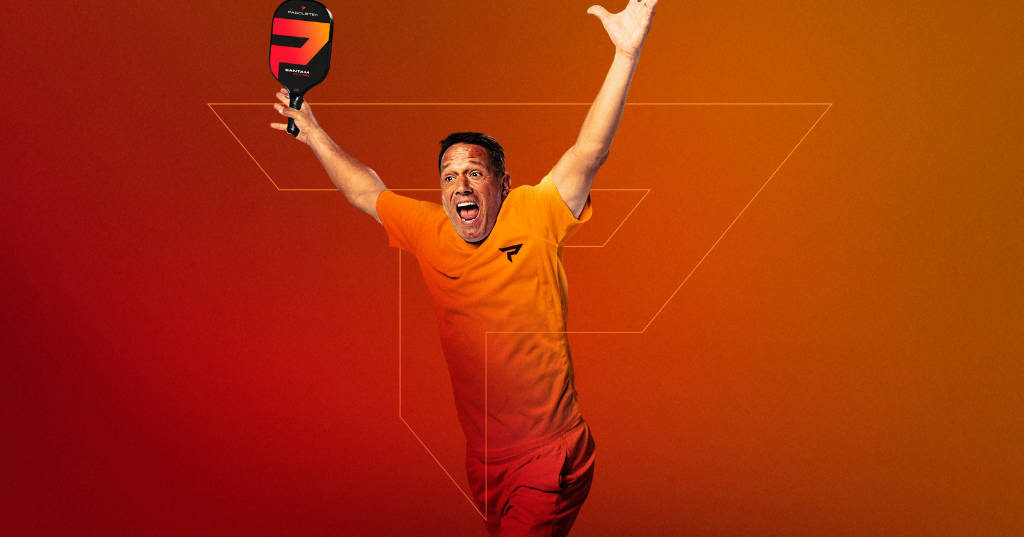Doubles pickleball play requires far more coordination and communication than singles pickleball. If you're starting to get more serious about doubles, there's one key tactic you'll need to incorporate into your game. So then, what's this game-changing strategy you and your partner need to add?
The key to doubles pickleball strategy is proper court positioning because it maximizes control of the court and player coordination. When players are well-positioned, they can cover more ground, exploit opponents' weaknesses, and seamlessly shift between offense and defense for a winning strategy.
There are a million and one articles out there talking about the finer points of doubles strategy but rarely do they focus on positioning. Perhaps it's not as engaging as stacking and other more advanced techniques, but foundational for any doubles success nonetheless. If you aren't familiar with what to do from here, don't worry, you'll be graduating with a master's in team court position by the end of this article.
What Makes Positioning So Important for Doubles?
Positioning is vital in doubles pickleball as it maximizes court coverage, reduces errors, and enhances teamwork. Proper court positioning allows players to cover each other's weaknesses, maintain pressure on opponents, and create offensive opportunities with coordinated shots.
If positioning is the trunk of the tree, all the attributes above are just a few of the limbs. There are many limbs and branches beyond. That's why it's so critical to winning in doubles. Improved court coverage means quicker reactions, better shot selection, and reduced vulnerability by decreasing gaps on your side and creating offensive opportunities to attack.
If executed to perfection you're essentially setting up a defensive wall without having to play defensively. Positioning is fluid to the rally, meeting the ball based on context rather than blindly following a rule. That said, some moments call for dependable spots on the court, so let's look at a few of the big moments and what you should be doing at that time.
Basic Court Positions and Roles in Doubles
The first two hits in a rally are more or less dependable situations throughout a game - the serve and return of serve. And doubles relies heavily on dink exchanges, so this is another part of the court to focus on positioning. Finally, there are some general constructs to follow based on the control of a game - that is, where you should be and how you should approach a defensive or offensive opportunity. We'll explore each in depth.
Serving Side
The serving player must put the ball in play from behind the baseline, while the partner can stand anywhere, if unstacked they most often hug the baseline. The server's role is to deliver a strong, deep serve, and the partner's role is to be ready for the return, ensuring optimal court coverage and teamwork.
Roles for the Serving Side
A deep serve is always great, but the goal for the serving player at a beginner level is to accurately get the ball in play and try to make it as unattackable as possible. While there's no guarantee the return of serve will go to the partner of the serving side, their responsibility is to anticipate the return and use the third shot to maintain an advantageous court position - this means making the third shot an "unattackable shot". Many will drop shots or drive here - just know the third shot drop is one of the most challenging shots in the game.
Stacking - A Short Blurb
We won't get into all the details of stacking, but we should at least hit on the highlights quickly. Stacking is an untraditional way for the serving team to line up, where both players start on the same side the ball is being served from.
Once the ball is put into play with by serving, the players can fan out to whichever side they like. Most teams do this as a way to match their strengths against their opponent's weaknesses.
It's certainly not a foundational strategy, but you can see how more advanced positions stem from getting the fundamentals right. Stacking requires amazing team chemistry and communication to execute correctly.
Return of Serve
During the return of serve, the receiving player will stay near the baseline, while their partner positions closer to the kitchen line, directly opposite the serving player. The receiver's goal is to keep the serving team pushed back at their baseline. They can do this by hitting the return of serve deep, creating a challenging third shot.
Deep Returns
Your return of serve can go anywhere in bounds, but the further your opponents remain from the net, the more difficult it will be for them to compete. That said, there's been a lot of chatter around a separate strategy for the return of serve - it's the second shot drop. We have a lot to say on this topic (click here for the long version), but to keep it short and sweet... The second shot drop is a bad idea. The one advantage you have as the returning team is your court position. The moment you drop from this position you remove that advantage. And at more experienced skill levels, the serving side will track that ball down and make you pay for it.
Now then, back to the return of serve...
The partner's role on the receiving side is to anticipate the third shot while their partner transitions - typically moving from the baseline into No Man's Land, and ultimately making it to the kitchen. The partner of the receiving player is in charge of maintaining optimal court coverage.
If you're unfamiliar with No Man's Land, it's the area found on both sides of the court that sits wedged between the baseline and kitchen line. It gets this cautionary name because it's impossible to defend or attack from. Meaning, it's too far from the net to volley effectively and too close to the net to hit a groundstroke.
Split Step Rather Than Sprint Up
An important distinction here, and a word of advice, you can take effective shots while transitioning, but don't remain in that space because it will catch up to you. Watch any of the pros out there and look at how they move from the baseline to the kitchen. Rarely will they return the ball and then shuttle run to the kitchen. They're far more in tune with the game and keeping their head up for that behavior.
Instead, they chop up the distance with a few split steps. This makes them more aware and reactive to how the flow of a rally is going. So while it's ill-advised to remain in No Man's Land, don't create a worse shot for yourself because of a self-imposed guideline. Take the shot from wherever you have the best position.
Mastering the Kitchen
Why do both sides seemingly race to the kitchen after all? It's all about control. The side that dominates the kitchen will consistently place pressure on the other team, pushing them into a defensive position. This removes their shot options and their ability to play strategically.
Since it's only 7 feet from the net, with some careful footwork at the kitchen line, you can drop aggressive dinks and volleys that make the other side run around wherever you like. This creates errors, leading to a new server, a side out, or a point for your side.
Don't confuse this with a constant barrage of rally-ending attacks - it's less of a boiling pot and more of a bringing the pot to a boil. And although this requires immense patience, it's the distinction between winning and losing.
To own the kitchen both you and your partner need to be at the line in a ready position with your paddles in front of your bodies. You'll need soft hands to arc the ball precisely where you mean to and a heavy reliance on agility to block your opponent's attacks.
Defensive Strategies and Positioning
We've recently tackled the topic of how to defend in pickleball, focusing on 9 tips in particular. Playing from a defensive position will wear you down if you find yourself in that spot regularly. We believe there's a basic shift in mindset that can help any team get out of playing defensively. It's moving from the thought of trying to keep the ball in play to trying to force your opponent to hit difficult shots.
At a more tactical level, there's one spot on the court that's the cause of frustration... Of all the defensive strategies you and your partner could practice, the most worthwhile would be covering the middle. That runway between you two is the cause of confusion and lost points. Communication is the best way to tackle this sore spot. Establishing rules where the forehand player always takes it or the player with a ridiculous backhand gets it.
Offensive Strategies and Positioning
The nature of the offense is to keep your opponents on their heels and maintain momentum. Offensive strategies in pickleball involve taking control of the kitchen, executing effective third shot drops when serving, and utilizing powerful smashes and volleys.
Maintaining an aggressive stance forces the other side to commit a fault rather than requiring your side to perform a heroic shot. While we've already talked about the power of running the kitchen and touched a bit on third-shot drops, we haven't discussed overhead smashes and volleys.
Overhead Smashes and Volleys
Forcing the other team to hit the ball below the height of the net is a quick way to create a pop-up. And when you take the ball from the air as early as possible, you're generating a maximum amount of speed and power as possible.
This is where play should shift from pressure cooker to truly unattackable. The position will mostly rely on a solid presence in the kitchen, but the bigger point is to think about where you will position your shot on the other side.
Aiming at the opponent's feet or at their dominant arm's hip and shoulder - these are hot spots for jamming them up.
The 2 Most Important Ingredients to Better Doubles Positioning
If the ball's in play, position matters. The best teams know this and possess two traits to make sure they're always in the best position possible. They have solid communication and operate with an adaptable mindset.
Communication and Teamwork
Although it seems a bit trite - maybe more befitting a motivational poster at the cubicle - this is the backbone of great teams unlocking unbeatable positioning on the court. But what does it take to be a great communicator and teammate?
Well, for starters, you need to have some essential communication skills in your back pocket. Active listening, clear and concise language, and the ability to provide constructive feedback are all must-haves for effective communication on the court.
Creating a strong partnership with your doubles partner is also essential. This means building trust, understanding each other's strengths and weaknesses, and establishing clear roles and responsibilities. When you're in sync with your partner, you'll be able to anticipate each other's moves and make split-second decisions with ease.
Finally, it's important to maintain a positive team dynamic, even when things aren't going your way. By supporting and encouraging each other, staying focused on your goals, and being flexible and adaptable in your approach, you'll be able to weather any storm that comes your way.
Adapting to Different Opponents and Situations
It's an unpredictable game and being able to adapt to different opponents and situations is like storing a secret weapon in your back pocket. To truly master the art of adaptation, you need to be able to read your opponents like a book. This means observing their strengths and weaknesses and adjusting your game plan accordingly - in a way, this is the twin pillar to communication with your partner since changing the plans requires clarity and an agreed approach.
Whether it's hitting more lobs to keep them back at the net, or targeting their weaker backhand side, being able to adapt your strategy on the fly is an essential skill for successful doubles positioning and how teams achieve greatness.
But it's not just about strategy - your positioning on the court is also crucial for adapting to different opponents. Depending on your opponent's playstyle, this could mean adjusting where you position or where you place specific shots or serves.
It's a bit like the pitching team in baseball dropping back when a heavy hitter steps up to bat, or how they crowd the infield when a pitcher's at bat. You may need to adjust your court position or serve placement to gain an advantage. The best players know how to make these adjustments seamlessly, without missing a beat.
Of course, staying flexible and adapting to changing circumstances is easier said than done. But if you can remain calm under pressure, and be willing to adjust your game plan as needed, you'll be well on your way to mastering the art of adaptation. Whether it's a shift in the wind or an unexpected injury, the ability to adapt quickly and effectively can be the key to victory.
Location, Location, Location
Just like real estate, location on the court is how teams win games in pickleball. By having a clear understanding of the court and how to position yourself accordingly, you'll be able to outplay your opponents.
While it's impossible to know where the ball will go, watching your opponents, anticipating their shots, and committing the five position strategies to memory will help your team always be in a competitive spot. So practice the nuances of court positioning, and you can gain an edge over your opponents and take control of the game.
Ultimately, playing pickleball doubles is about being in sync with your partner, and adapting to different opponents and situations. Getting that right will naturally put you both in a better position.



Leave a comment
This site is protected by hCaptcha and the hCaptcha Privacy Policy and Terms of Service apply.